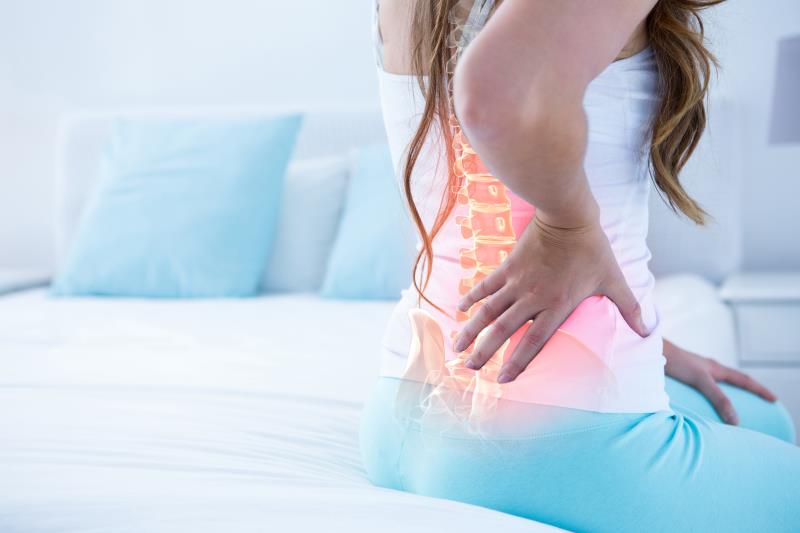Relugolix combo therapy preserves bone mass in women with HMB





Combining the oral GnRH* receptor antagonist relugolix together with oestradiol and the progestin norethindrone helps protect against bone loss induced by oestrogen deprivation associated with the use of GnRH receptor antagonist monotherapy for treating heavy menstrual bleeding, according to the LIBERTY studies released during the ACOG 2020 Meeting.
Participants in the current analysis were 768 premenopausal women aged 18–50 years with heavy menstrual bleeding (HMB; ≥80 mL/cycle) associated with uterine fibroids from the double-blind, phase III LIBERTY 1 and 2 studies. They were randomized in a 1:1:1 ratio to receive relugolix combination therapy (CT) comprising relugolix 40 mg, oestradiol 1.0 mg, and norethindrone acetate 0.5 mg once daily; delayed relugolix-CT involving relugolix 40 mg monotherapy for 12 weeks followed by relugolix-CT for 12 weeks; or placebo for 24 weeks. [ACOG 2020, abstract OP04-2D]
In LIBERTY 1 (n=387), BMD at the lumbar spine declined by 1.82 percent from baseline in the delayed relugolix-CT arm compared with only 0.36-percent drop in the relugolix-CT arm at 24 weeks. Mean changes in lumbar spine BMD was +0.05 percent in the placebo arm, as no GnRH receptor antagonist was used.
Similarly in LIBERTY 2 (n=381), decline in lumbar spine BMD was also greater with delayed relugolix-CT compared with relugolix-CT upfront (mean changes, -2.12 vs -0.13 percent), while the placebo arm saw a 0.32-percent increase in BMD.
“Compared with relugolix monotherapy, relugolix-CT preserves bone mass over 24 weeks,” observed the researchers.
Previously, primary efficacy analysis of the LIBERTY trials has shown that relugolix-CT was effective in reducing menstrual blood loss and pain in women with uterine fibroids and HMB compared with placebo.
“Initiating treatment for UF with relugolix combined with oestradiol and norethindrone represents a potential method for preserving BMD while providing therapeutic benefit over the long term,” the researchers stated.
QoL also improved
In addition to a protective benefit on the bones, relugolix-CT led to better patient-reported quality of life (QoL) compared with placebo, as shown in a separate analysis of the LIBERTY trials. [ACOG 2020, abstract OP04-4D]
At week 24, symptom severity (SS) scores, assessed using the Uterine Fibroid Symptom (UFS)-QoL questionnaire, significantly improved from baseline in the relugolix-CT arm vs the placebo arm in both LIBERTY 1 and 2 studies (nominal p<0.0001).
Relugolix-CT also led to greater improvements on health-related quality of life (HRQoL) scale in the UFS-QoL questionnaire compared with placebo (nominal p<0.0001).
Furthermore, similar findings were observed across all HRQoL subscales in favour of the relugolix-CT arm.
“Over 24 weeks, relugolix-CT significantly improved HMB and pain associated with uterine fibroids, with corresponding significant improvements in patient-reported SS, and HRQoL total and subscale scores,” concluded the researchers.